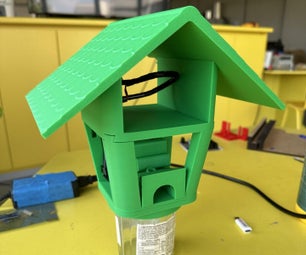Introduction: Retro Stylophone (NE555 Based)
Introduction:
This is a small Synthesizer-type of music gadgets that was once in the 80's very popular. It's called Stylophone. The Stylophone has a very simple curcuit that only consists of an NE555, LM386 and some complemantary Compotents. It creats a very unique sound that is very inculcating. I made a remake of the instrument and here is how to buil it. It has an optional 3D-printed housing. I'd be glad to see some remakes of you.
Special thanks go to drj113 for making the main curcuit and inspiring me: https://www.instructables.com/id/A-Stylophone/
Note: The photos may look a little bit warped but thats due to my smartphone camera
Supplies
Note: You can vary some of the values of the components a little bit if the correct one isn't available. The sound will only changle silghtly
1 x LM555
1 x LM386
1 x 10K log pot
1 x 4K7 linear pot
6 x 100nF ceramic/polyester
1 x 33nF cermaic/polyester
1 x 47nF cermaic/polyester
2 x 100uF elektrolytic
1 x 1N4004
2 x 8 pin IC Sockets
1 x USB Port
1 x 8 ohm Speaker
1 x 3,5mm Audio jack
2 x Switch 2 pos.
1 x 10R
1 x 560R
1 x 1k0
2 x 1K5
1 x 1K6
2 x 1k8
1 x 2k0
2 x 2k2
2 x 2k4
2 x 2k7
2 x 3k0
2 x 3k3
1 x 3k6
2 x 3k9
2 x 4k3
2 x 4k7
2 x 12K
Step 1: Planning the Project
As you can see the project is a very simple curcuit. I will not go into detail here but i will cover the basic functions. The curcuit works with a LM555 wich generates the sound, a vibrato effect and a LM386 wich acts as an amplifier for the generated sound. In the first picture you can see the schematic i made and on the second one a schematic of an old stylophone.
Note: If you want to know how exactly the curcuit works check out drj113's deatailed and well made explaination: https://www.instructables.com/id/A-Stylophone/
Step 2: Making/Ordering the PCB
Note: The PCB layout may look different than the one on the photo due to changes i did afterwards
Buying:
I ordered the PCB at JLCPCB for a very cheap price (I paid like 7€ for 5 of them and if you order the first time the shipping is free). They have a very superior quality in comparison to their price. I chose the black solder mask but you can coose whatever you like.
Etching it yourself:
Of course you can etch the PCB but it will be a little bit difficult because it is double sided. (I personally recommend buying it)
Step 3: Do the Soldering
The soldering hasn't got anything special to it so you can easily do it even if you are not an expert! Just follow the schmeatic.
Note: Some componets have to be wired up (depends on your housing)
Step 4: Do the Wiring
In this step you just need to wire up the speaker, stylus (the thing you play the instrument with), USB-port (for power), switches, audio jack and potentiometers. One switch goes between the USB port and the connection on the PCB, the other one goes to the Vibrato-labeled connections on the PCB. The speaker and the audio jack go in parallel formation to the audio jack connector. The audio jack must be briged into mono output mode (just connect the left and right channel). The potentiometres are just simply wired up to the marked connectors. And at last the "Stylus" (can be just a simple wire) has to be connected to to the connctor next to the audio jack.
Step 5: (Optional) Add a Housing
I don't recommend using the housing I made because it needs some modification on some places. So I would be glad if someone would make a better housing and share it with us. Just be creative with what you use!
Attachments
Step 6: Sound Demo
Note: I'm a very bad musician so here is only a crude sound demo of how it could sound like!









